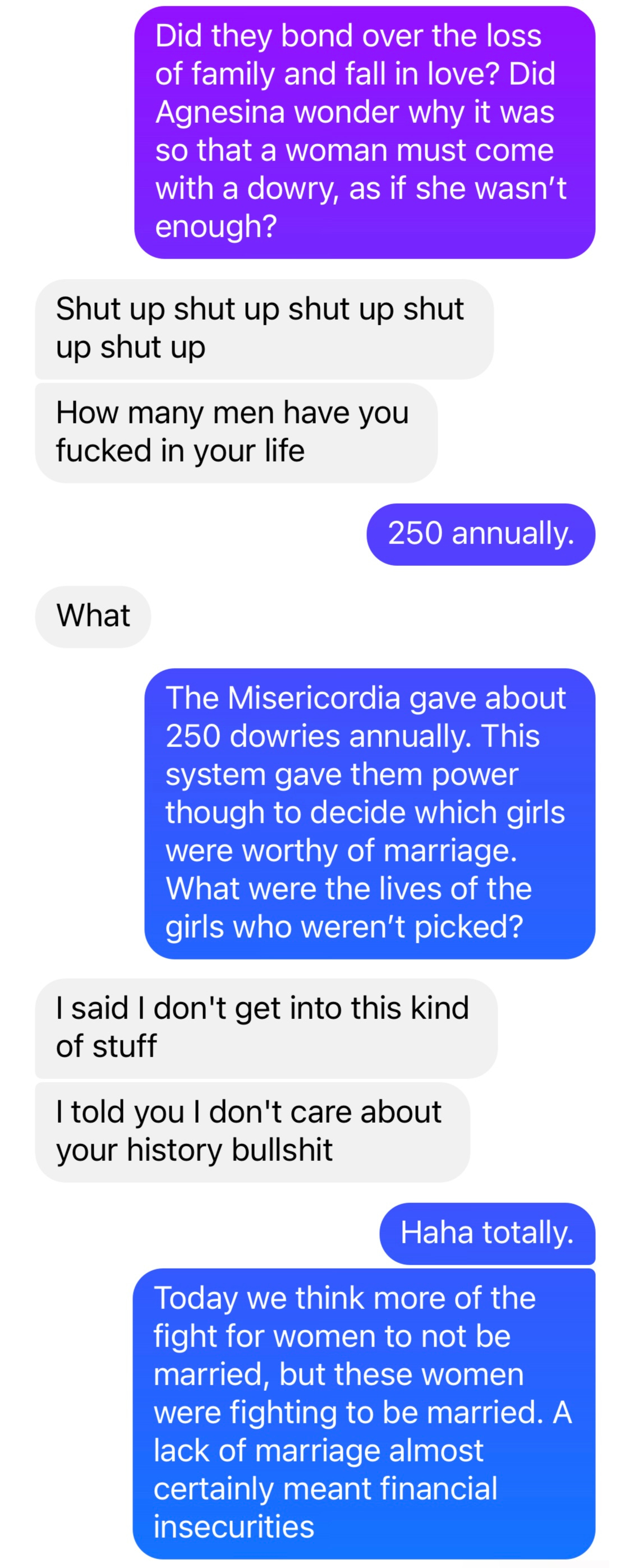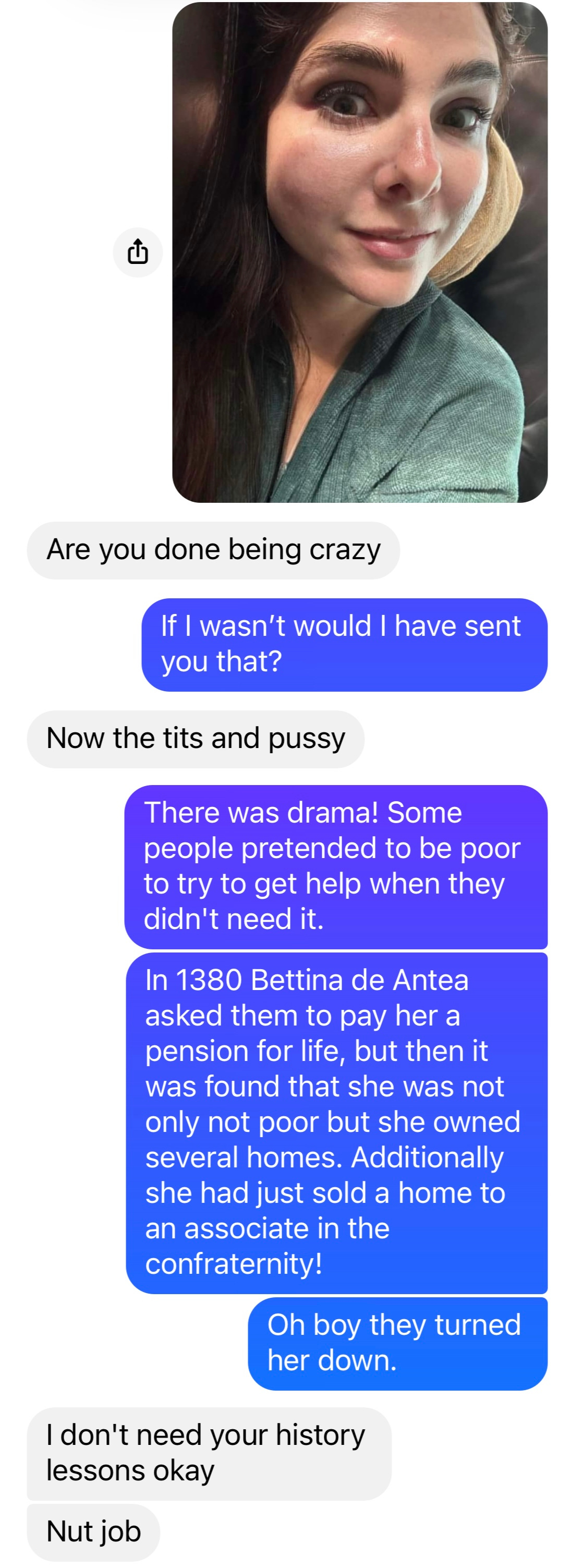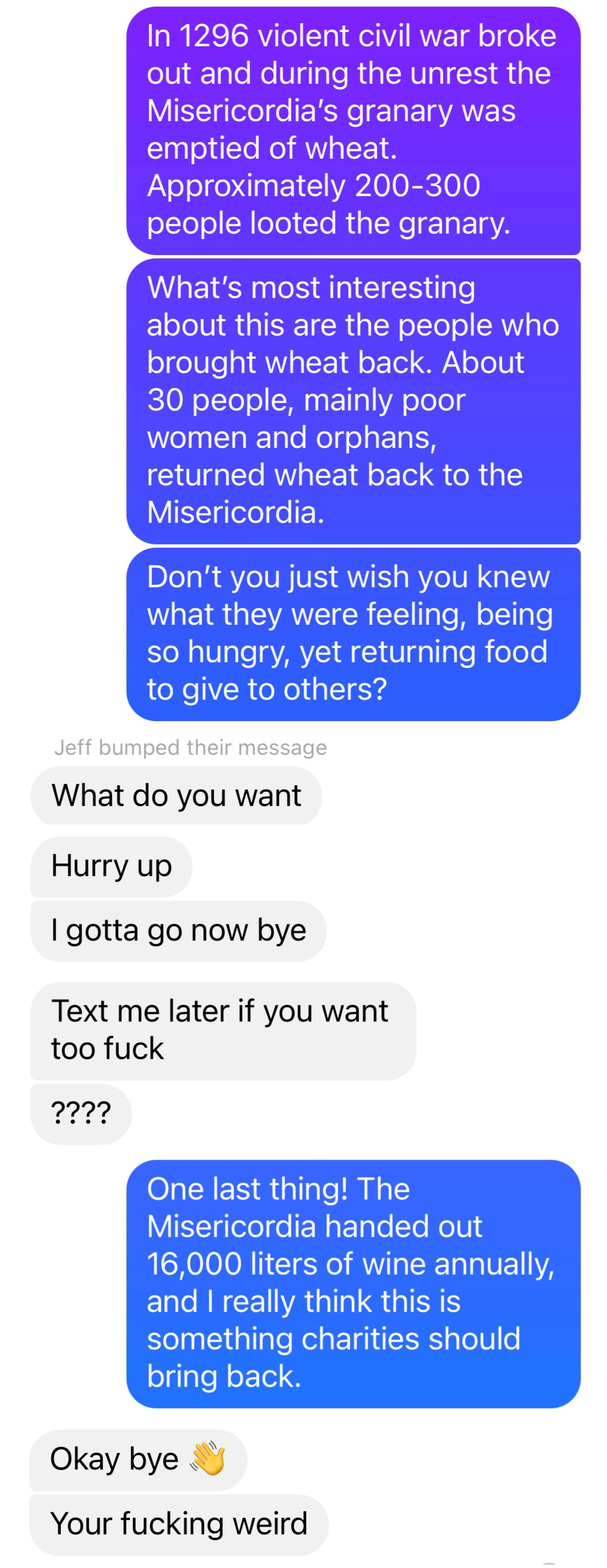Horny History: The Unknown Women of Middle Age Bergamo
It’s real history, as told by some horny dude in my inbox and me.
Unknown.
Forgotten.
The women I’m about to mention never mattered enough to make what little history most of us get to know about medieval women. They are the servants and the domestic workers. The people that served the ruling class and died doing so. Recorded by a middle age charity, their names are only left in the world because of their poverty and destitution. I don’t care to learn about the lives of the ruling class now, why should I care to learn about them in the past.
The problem is, it’s very difficult to know a lot about medieval women in general, and especially difficult to find the stories of poor medieval women. Not knowing who else to ask for help, I turned to our next horny man, Jeff, to help me investigate.
If these stories are meaningful to you, please subscribe to support me. I’m funded by all of you. Subscriptions are only $5 a month and you get bonus posts only my paid subscribers can see.
He says that as if it’s a bad thing. (Wink)
At first many of the people who needed help resided within the homes of others. The community seemed to take care of each other in that way. When the Misericordia Maggiore in Bergamo began in 1282, clothing and other help were distributed individually to the people in need. In many ways the system sounds more like mutual aid than modern day charity, although there’s still a power hierarchy and religious aspect that I’m not ignoring with that statement. When people saw that their neighbor needed help, they reported it to the confraternity. Volunteers from around the neighborhood then distributed the help to people in need. Help included money, clothing, food, medical care and other assistance. The donations were funded by everyone. Wills of the poor show they left their only possessions of value to the confraternity because they trusted it would reach those who needed it.
Speaking of power hierarchy, although the Misericordia helped poor people, the criteria that included is interesting. Besides actual low income people, this also included people who “should” be of high status but whose incomes didn’t allow them to live at their social rank. It would be like taking someone middle class today and gifting them money so that they could appear upper class because their family had always been upper class.
Hours after I typed my ending about wine to this man, a different man advised us to drink wine, or was it to stop “wining.”
It’s morning where I am, but it’s middle age Bergamo somewhere. Cheers to Agnesina and all the unknown women of Bergamo.
Sources:
Stories of Women in the Middle Ages Maria Teresa Brolis
The Confraternity of the Misericordia Maggiore in Bergamo: Three Texts (1282–1362) Roisin Cossar
Le Opere Delle MIA Maria Teresa Brolis
The Transformation of Laity in Bergamo Roisin Cossar
As always, I would appreciate you heart reacting this post for me. More engagement means more people might see my work. ♥️
You should also read:
















This one is going to rather a lot of censoring to get it on Facebook 🫣🫣🫣
By the way, if you saw my preview post on social media, you were never going to guess Agnesina’s name since I later realized I missed the last n. 😝